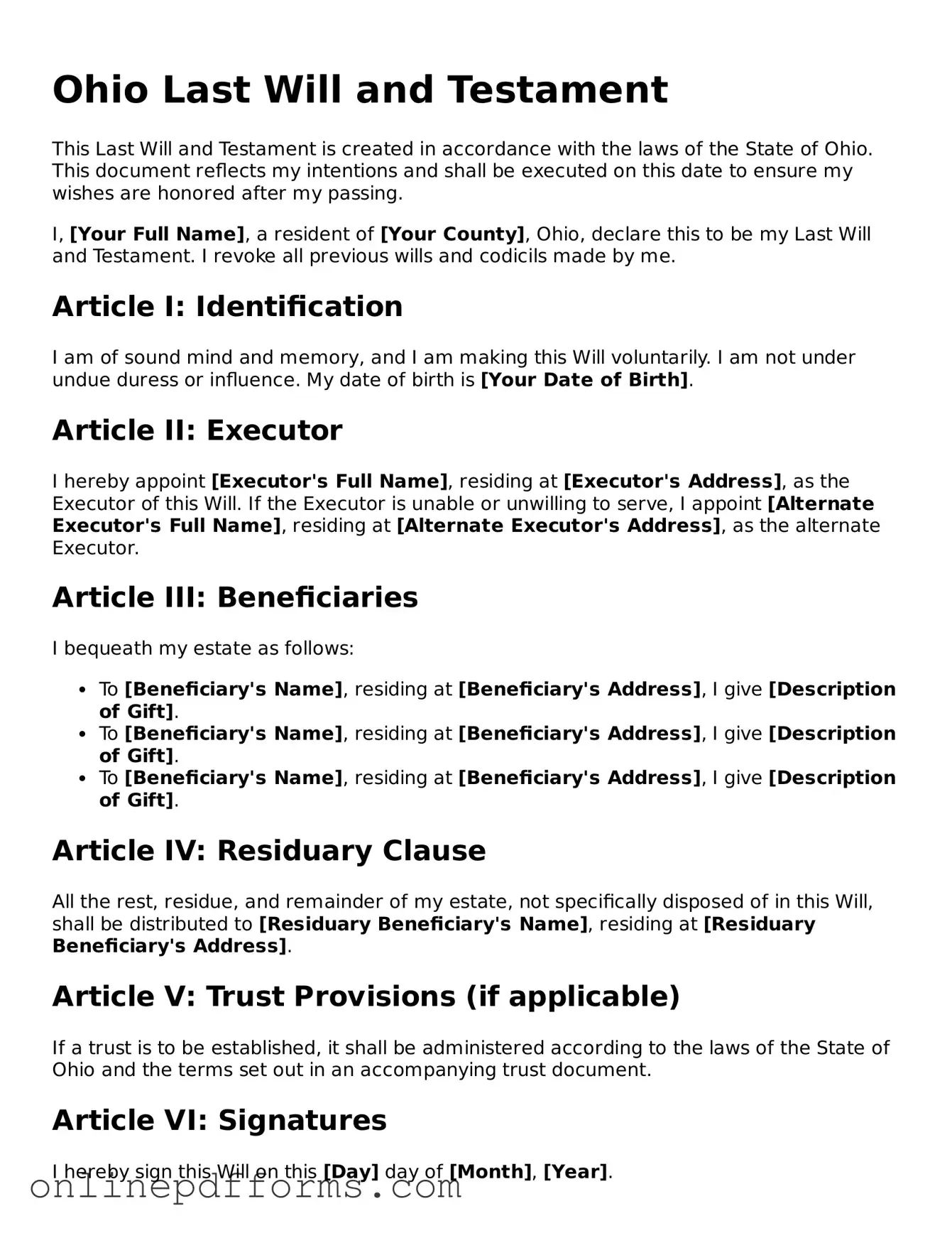The Ohio Last Will and Testament form shares similarities with a Living Will, which outlines an individual's preferences regarding medical treatment in situations where they cannot communicate their wishes. Like a Last Will, a Living Will is a crucial document that reflects personal desires and intentions. Both documents serve to ensure that an individual's wishes are honored, whether in matters of estate distribution or medical care. While one deals with end-of-life decisions regarding health care, the other focuses on the distribution of assets after death.
Understanding the significance of a comprehensive General Power of Attorney form is vital for those looking to delegate authority in their personal and financial affairs. This document empowers an appointed individual to make critical decisions on behalf of another, ensuring that their interests are well protected.
Another document akin to the Last Will is a Durable Power of Attorney. This document allows a person to designate someone else to make financial or legal decisions on their behalf if they become incapacitated. Similar to a Last Will, it is essential for ensuring that an individual's preferences are respected when they can no longer advocate for themselves. Both documents are proactive measures that help individuals maintain control over their affairs, even in challenging circumstances.
A Trust Agreement is also comparable to the Last Will. This document allows individuals to manage their assets during their lifetime and specify how those assets should be distributed after their death. Trusts can offer advantages such as avoiding probate, which can simplify the process for heirs. Like a Last Will, a Trust Agreement ensures that an individual's wishes regarding asset distribution are clearly defined and legally binding.
The Health Care Proxy is another important document that parallels the Last Will. It allows individuals to appoint someone to make medical decisions on their behalf if they are unable to do so. This document serves a similar purpose to a Living Will, as it ensures that a person's health care preferences are respected. Both documents emphasize the importance of having a trusted person advocate for an individual’s wishes in critical situations.
A Codicil is a document that modifies an existing Last Will and Testament. It can add, change, or revoke provisions in the original will without the need to create an entirely new document. This similarity lies in their shared purpose of ensuring that an individual's final wishes are accurately reflected and updated as life circumstances change. Codicils provide a straightforward way to make adjustments while maintaining the integrity of the original will.
The Revocable Living Trust also bears resemblance to the Last Will. This document allows individuals to retain control over their assets while providing for their distribution upon death. Like a Last Will, it details the wishes of the individual regarding asset management and distribution. The key difference lies in the fact that a Revocable Living Trust can take effect during the individual's lifetime, providing added flexibility and control over assets.
Finally, the Joint Will is similar to the Last Will in that it is a single document executed by two individuals, typically spouses, outlining their mutual wishes regarding asset distribution. This document simplifies the process for couples who want to ensure that their shared intentions are clearly documented. Like a Last Will, a Joint Will serves to protect the interests of both parties and provides clarity in the event of one partner's passing.
